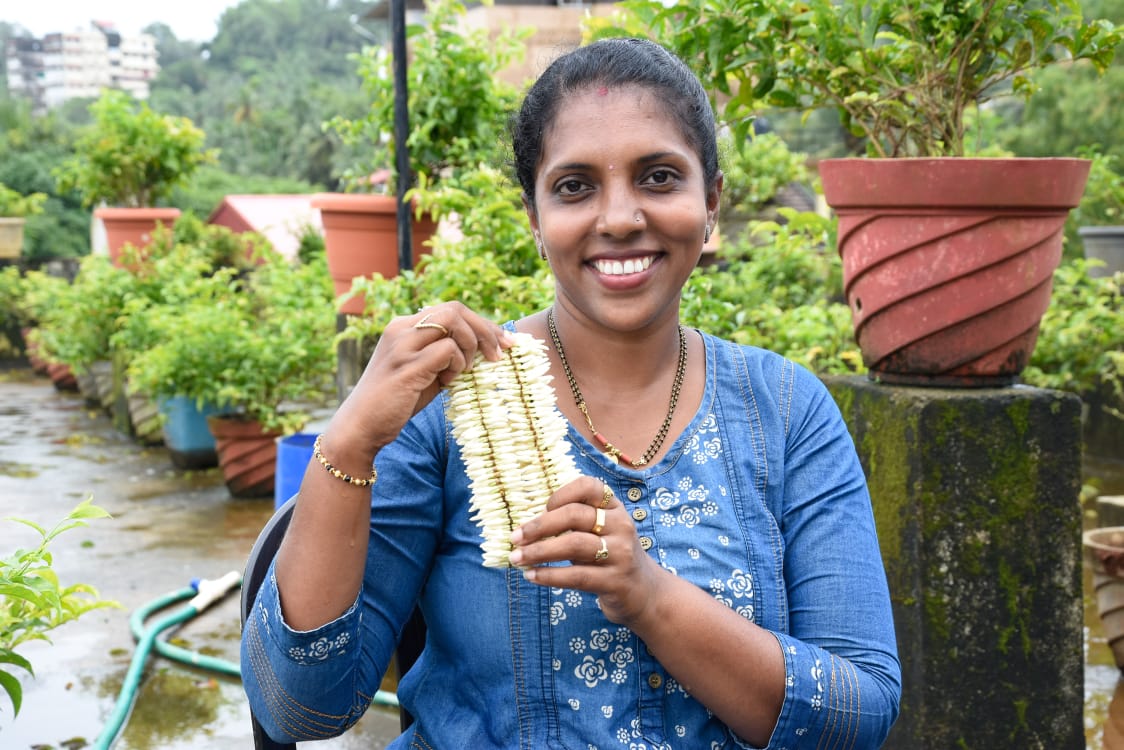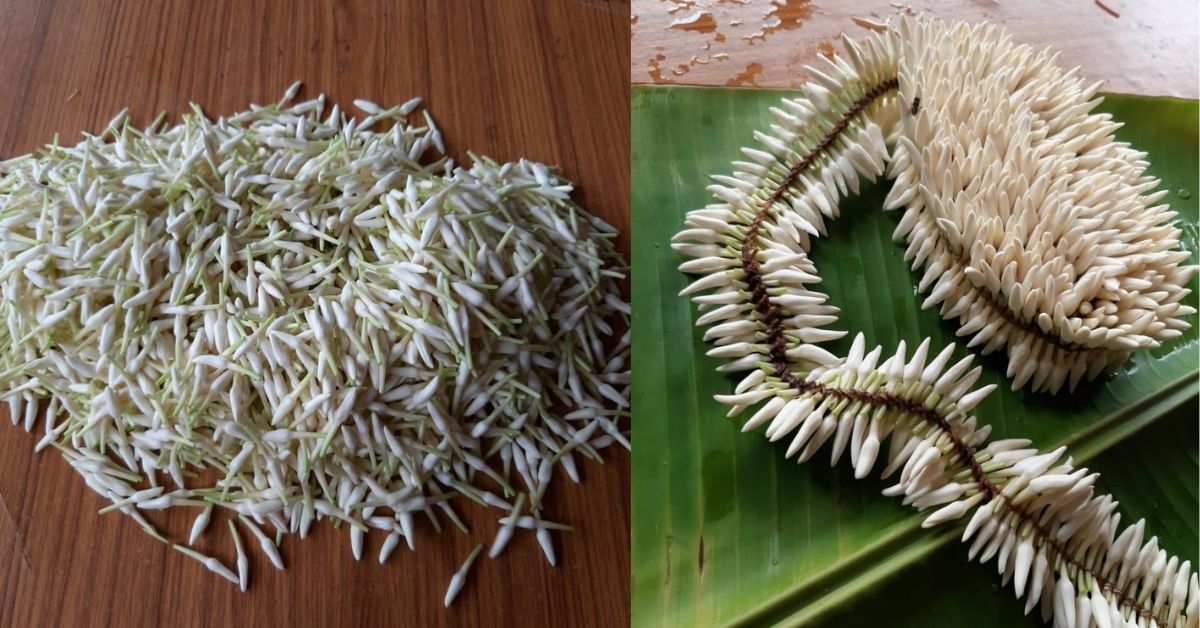I nurture three jasmine plants in my small balcony, and the joy their fragrance brings me is immeasurable. Kirana Devadiga (36), an advocate based in Mangaluru, echoes my sentiment — she says growing jasmines changed her life.
Kiran started growing the Udupi Jasmine, also known as Shankarpura Mallige, during the lockdown in March last year. While jasmine is grown in different parts of the country and is called by different names, the Udupi Mallige has an unparalleled fragrance, and holds the distinction of having a Geographical Indication (GI) tag.
Speaking to The Better India, Kirana says, “I have always had a secret desire to own a piece of land and cultivate it. Being a city bred girl, that dream never materialised. However, the lockdown came as a boon because I started to spend more time thinking about my passion — agriculture and farming.”
When Kirana brought up this desire, her sisters and husband Mahesh laughed at her.

“They asked me why I would want to spend my time growing flowers when people all around the world were struggling with COVID,” she says. Her husband also asked her what an advocate would do becoming a farmer. But Kirana persisted and went about researching and finding out more about the plant.
‘Where there is a will, there is a way’

With terrace space at her disposal, Kirana spent a lot of time online understanding how terrace gardening works. From there, the process was fairly simple, she says. “All you require is patience and a will to grow plants,” she says. It was Rajesh, the owner of Sahyadri Nursery in Mangaluru, who helped Kirana identify the plant she could grow. “He showed me hibiscus, which would be an easy plant to nurture, but I didn’t see an appeal in that. I wanted to grow something that would also augment my regular income, for which jasmine seemed to be just right.”
Since it was during the lockdown, the nursery was filled with jasmine plants. Kirana says, “It was good for me in a way – the lockdown meant that not too many people were out shopping for plants. Also, given that it was the season for jasmines, the nursery had close to 90 plants, all of which I purchased.” She spent a total of Rs 3,150 (Rs 35 for each plant) and loaded her car with 90 jasmine plants.
Now that she had the plants, she needed pots. As luck would have it, on her way back home, she spotted a street vendor who was trying to sell off 100-odd pots so he could get back to his home in north India. “I bought all the pots he had for Rs 65 each and loaded them up in the car. Because of the lockdown, it was next to impossible to get a tempo or even an auto rickshaw to help me ferry the pots home,” she says.
The next task was to carry all the pots and plants up two floors and to the terrace. “It took my husband, 7-year-old son and me three days to get them all on the terrace. We had no help and had to do this all by ourselves – it was a back breaking exercise but one that brought a lot of joy,” she adds. Kirana spent the next few days potting the jasmine plants and lining them up on her terrace.
Kirana says she learnt a great deal through conversations with the nursery owner. “I was a complete novice when it came to growing anything – I had no idea about soil type, how much water the plant required and what kind of manure would help it grow better,” she says. “All the knowledge I gathered was either from watching YouTube videos or having conversations with other terrace gardeners.”
A daily affair

Kirana and Mahesh spent the next three months meticulously taking care of the plants. “Mahesh is up way before I am, and is the one who usually tends to the plants in the morning. The jasmine buds should be picked before the first sun rays fall upon it,” she says. Kirana would go up to the terrace after her morning chores were done to check the soil and add manure as and when required. “While the plants started to bloom well after three months, I refrained from plucking the flowers, hoping for better yield,” she says.
“It is the freshness of the flowers that determines its fragrance,” she adds.
Kirana’s research told her to wait at least six months before plucking the flowers, so she let the plants get bushy. “When I plucked the flowers for the first time, I saw amazing yield, close to 3 ‘chendu’,” she adds. As many as 800 flowers go into making one chendu.
These jasmine flowers are then strung together closely using a string made of plantain stalk.

This, too, is an art that Kirana learnt on the go. “For all the mocking that my sisters did when I started, they are the ones who help me string the flowers together today. In fact, they are so inspired by the manner in which my jasmine plants have fared that they too have started jasmine cultivation,” she says with a hearty laugh.
With an investment of about Rs 12,000, which includes plants, pots and manure, Kirana has made close to Rs 85,000 from the sale of the jasmine flowers till date. “For me, buying a bag of fertiliser was akin to buying new clothes or jewellery,” she says. Kirana is a stellar example of how hard work always finds a way to shine.
In conclusion, she says, “It is not difficult to grow jasmine – all one needs to do is manage time well. Find ways to make things happen for yourself rather than complaining about life and not having time. No matter how small the dream, do not let people laugh at it. ”
(Edited by Divya Sethu)
No comments:
Post a Comment